Books by daniela bleichmar
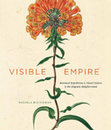
Between 1777 and 1816, botanical expeditions crisscrossed the vast Spanish empire in an ambitious... more Between 1777 and 1816, botanical expeditions crisscrossed the vast Spanish empire in an ambitious project to survey the flora of much of the Americas, the Caribbean, and the Philippines. While these voyages produced written texts and compiled collections of specimens, they dedicated an overwhelming proportion of their resources and energy to the creation of visual materials. European and American naturalists and artists collaborated to manufacture a staggering total of more than 12,000 botanical illustrations. Yet these images have remained largely overlooked—until now.
In this lavishly illustrated volume, Daniela Bleichmar gives this archive its due, finding in these botanical images a window into the worlds of Enlightenment science, visual culture, and empire. Through innovative interdisciplinary scholarship that bridges the histories of science, visual culture, and the Hispanic world, Bleichmar uses these images to trace two related histories: the little-known history of scientific expeditions in the Hispanic Enlightenment and the history of visual evidence in both science and administration in the early modern Spanish empire. As Bleichmar shows, in the Spanish empire visual epistemology operated not only in scientific contexts but also as part of an imperial apparatus that had a long-established tradition of deploying visual evidence for administrative purposes.

Collecting Across Cultures: Material Exchanges in the Early Modern Atlantic World, co-edited with Peter C. Mancall (University of Pennsylvania Press, 2011)
In the early modern age more people traveled farther than at any earlier time in human history. M... more In the early modern age more people traveled farther than at any earlier time in human history. Many returned home with stories of distant lands and at least some of the objects they collected during their journeys. And those who did not travel eagerly acquired wondrous materials that arrived from faraway places. Objects traveled various routes—personal, imperial, missionary, or trade—and moved not only across space but also across cultures.
Histories of the early modern global culture of collecting have focused for the most part on European Wunderkammern, or "cabinets of curiosities." But the passion for acquiring unfamiliar items rippled across many lands. The court in Java marveled at, collected, and displayed myriad goods brought through its halls. African princes traded captured members of other African groups so they could get the newest kinds of cloth produced in Europe. Native Americans sought colored glass beads made in Europe, often trading them to other indigenous groups. Items changed hands and crossed cultural boundaries frequently, often gaining new and valuable meanings in the process. An object that might have seemed mundane in some cultures could become a target of veneration in another.
The fourteen essays in Collecting Across Cultures represent work by an international group of historians, art historians, and historians of science. Each author explores a specific aspect of the cross-cultural history of collecting and display from the dawn of the sixteenth century to the early decades of the nineteenth century. As the essays attest, an examination of early modern collecting in cross-cultural contexts sheds light on the creative and complicated ways in which objects in collections served to create knowledge—some factual, some fictional—about distant peoples in an increasingly connected world.
Science in the Spanish and Portuguese Empires, 1500–1800, co-edited with Paula DeVos, Kristin Huffine, and Kevin Sheehan (Stanford University Press, 2009)
Articles and Book Chapters by daniela bleichmar
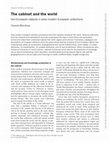
Journal of the History of Collections, 2021
Early modern European collectors proclaimed that their cabinets contained ‘the world’. What do co... more Early modern European collectors proclaimed that their cabinets contained ‘the world’. What do collections from the sixteenth and seventeenth centuries reveal about the ways in which those who assembled, owned and visited them understood objects from other regions and cultures? Inventories, catalogues and descriptions of European collections from the period reveal that the reception of non-European objects was
characterized, above all, by practices of geographical and cultural indeterminacy, most notably: (1) empty attribution, (2) misattribution, (3) unstable attribution, and (4) lack of attribution. When considered as early
versions of museums of ‘world cultures’, cabinets functioned not as sites for the production of knowledge but as sites of worldmaking, which absorbed, recontextualized and repurposed objects with specific
geographical and cultural origins and meanings to create undifferentiated, fungible foreignness.
Renaissance Quarterly, 2019
The "Codex Mendoza" is one of the earliest, most detailed, and most important postconquest accoun... more The "Codex Mendoza" is one of the earliest, most detailed, and most important postconquest accounts of pre-Hispanic Aztec life. Nahuas and Spaniards manufactured the codex through a complex process that involved translations across media, languages, and cultural framings. Translations made Aztec culture legible and acceptable to nonnative viewers and readers by recasting indigenous practices, knowledge, ontology, and epistemology. Following a stratigraphic approach that examines the process through which natives and Spaniards created a transcultural manuscript, the article examines the multiple interpretations and negotiations involved in producing images, books, and information about the indigenous world in early colonial Mexico.
Detail from unknown court artist, Yinzhen's Amusements: 'Reading by a Burner', an album leaf depi... more Detail from unknown court artist, Yinzhen's Amusements: 'Reading by a Burner', an album leaf depicting the Yongzheng emperor (r. 1723-35) with a cabinet of collected objects, c. 1723-35 (plate 2).
Visions of Imperial Nature
Botanical Expeditions and Visual Culture in the Hispanic Enlightenment, 2012
A Botanical Reconquista
Botanical Expeditions and Visual Culture in the Hispanic Enlightenment, 2012
Natural History & Visual Epistemology
Botanical Expeditions and Visual Culture in the Hispanic Enlightenment, 2012
Natural History & Visual Culture in the Spanish Empire
Botanical Expeditions and Visual Culture in the Hispanic Enlightenment, 2012
Economic Botany & the Limits of the Visual
Botanical Expeditions and Visual Culture in the Hispanic Enlightenment, 2012
A Visible and Useful Empire
Science in the Spanish and Portuguese Empires, 1500-1800, 2008
Chapter 1. Seeing the World in a Room: Looking at Exotica in Early Modern Collections
Material Exchanges in the Early Modern Atlantic World, 2011
Representations, 2019
Daniela Bleichmar and Vanessa R. Schwartz, “Visual History: The Past in Pictures,” Representation... more Daniela Bleichmar and Vanessa R. Schwartz, “Visual History: The Past in Pictures,” Representations, 145.1 (Winter 2019): 1–31
Sites of Mediation: Connected Histories of Places, Processes, and Objects in Europe and Beyond, 1450–1650
This essay examines the Codex Mendoza, a pictorial
manuscript created in Mexico City c. 1542, thr... more This essay examines the Codex Mendoza, a pictorial
manuscript created in Mexico City c. 1542, through a
focus on acts and moments of translation. Making the
codex involved linguistic and cultural translations,
transforming images into words, oral narrative into
written text, Nahuatl into Spanish, and Amerindian
history and customs into viceregal and European
versions. The codex was then physically translated or
transported from Mexico to Paris, London, and Oxford.
It later moved across media, from manuscript to
print, and also interpretively, as publications provided
different readings. The essay argues that mobility was
not a physical accident that happened to a stable and
immutable object, but rather a series of constitutive
acts of translation, selection, and interpretation that
produced multiple versions of the object itself.

This article is a reflection on the Hispanic imperial visual archive, that is, the thousands of i... more This article is a reflection on the Hispanic imperial visual archive, that is, the thousands of images produced in the Spanish American viceroyalties in order to document, communicate, and transport claims about the New World in pictorial form. It examines the role of images as evidence, arguing for the continued importance of visual epistemology as a technique for producing and circulating knowledge from the sixteenth to the eighteenth centuries. The essay focuses on visual epistemology and mobility, addressing the capacity of images to embody information and objects and to transport them from one place to another. Its goals are thus: (1) to highlight the active generation of scientific knowledge in the Hispanic world, often connected to imperial and administrative practices; (2) to present transregional channels of circulation, demonstrating the connected histories of the viceroyalties and the Iberian Peninsula and the multidirectional trajectories in which information and knowledge moved; and (3) to point out the deep connections between the earlier and later colonial periods, which often remain disconnected in the historiography. This article also explores the potential of images as historical sources, suggesting that the high status of images in the early modern Hispanic world resulted in an enormous pictorial archive that historians have failed to consider with the attention and rigor they have lavished on the textual archive.

A catalog printed in Paris in 1766 advertised the sale of paintings, prints, shells, and other cu... more A catalog printed in Paris in 1766 advertised the sale of paintings, prints, shells, and other curiosities from the collection of the recently deceased Antoine-Joseph Dezallier d'Argenville, identified on the title page as a maître des comptes and a member of the prestigious scientific societies of London and Montpellier [ ]. 1 Dezallier was born into a family of booksellers in Paris on 1 July 1680. He studied with the foremost experts on drawing, engraving, the history of art, and connoisseurship, including the important art theoretician Roger de Piles and the prolific engraver Bernard Picart. 2 He also learned gardening from the celebrated architect and garden designer Alexandre Le Blond. 3 Dezallier traveled to Italy and lived there for over two years, becoming familiar with what were considered the two great corpuses of art, ancient and modern. After returning to Paris in 1716, he gained a series of positions in the royal administration, serving as secrétaire du roi, then maître des comptes, and later a conseiller du roi. Over the years he amassed a very significant collection that included paintings, drawings, prints, and shells, and participated in correspondence and exchange networks with collectors and scholars throughout Europe. 4 After Dezallier d'Argenville's death in 1765, his collection was auctioned by Pierre Remy, one of the foremost Parisian art dealers at the time-a testament to Dezallier's cultural standing and to the value of the collection. 5



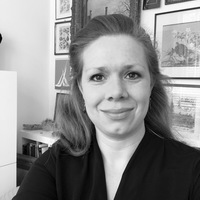
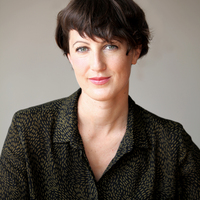



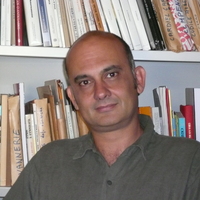

Uploads
Books by daniela bleichmar
In this lavishly illustrated volume, Daniela Bleichmar gives this archive its due, finding in these botanical images a window into the worlds of Enlightenment science, visual culture, and empire. Through innovative interdisciplinary scholarship that bridges the histories of science, visual culture, and the Hispanic world, Bleichmar uses these images to trace two related histories: the little-known history of scientific expeditions in the Hispanic Enlightenment and the history of visual evidence in both science and administration in the early modern Spanish empire. As Bleichmar shows, in the Spanish empire visual epistemology operated not only in scientific contexts but also as part of an imperial apparatus that had a long-established tradition of deploying visual evidence for administrative purposes.
Histories of the early modern global culture of collecting have focused for the most part on European Wunderkammern, or "cabinets of curiosities." But the passion for acquiring unfamiliar items rippled across many lands. The court in Java marveled at, collected, and displayed myriad goods brought through its halls. African princes traded captured members of other African groups so they could get the newest kinds of cloth produced in Europe. Native Americans sought colored glass beads made in Europe, often trading them to other indigenous groups. Items changed hands and crossed cultural boundaries frequently, often gaining new and valuable meanings in the process. An object that might have seemed mundane in some cultures could become a target of veneration in another.
The fourteen essays in Collecting Across Cultures represent work by an international group of historians, art historians, and historians of science. Each author explores a specific aspect of the cross-cultural history of collecting and display from the dawn of the sixteenth century to the early decades of the nineteenth century. As the essays attest, an examination of early modern collecting in cross-cultural contexts sheds light on the creative and complicated ways in which objects in collections served to create knowledge—some factual, some fictional—about distant peoples in an increasingly connected world.
Articles and Book Chapters by daniela bleichmar
characterized, above all, by practices of geographical and cultural indeterminacy, most notably: (1) empty attribution, (2) misattribution, (3) unstable attribution, and (4) lack of attribution. When considered as early
versions of museums of ‘world cultures’, cabinets functioned not as sites for the production of knowledge but as sites of worldmaking, which absorbed, recontextualized and repurposed objects with specific
geographical and cultural origins and meanings to create undifferentiated, fungible foreignness.
manuscript created in Mexico City c. 1542, through a
focus on acts and moments of translation. Making the
codex involved linguistic and cultural translations,
transforming images into words, oral narrative into
written text, Nahuatl into Spanish, and Amerindian
history and customs into viceregal and European
versions. The codex was then physically translated or
transported from Mexico to Paris, London, and Oxford.
It later moved across media, from manuscript to
print, and also interpretively, as publications provided
different readings. The essay argues that mobility was
not a physical accident that happened to a stable and
immutable object, but rather a series of constitutive
acts of translation, selection, and interpretation that
produced multiple versions of the object itself.
In this lavishly illustrated volume, Daniela Bleichmar gives this archive its due, finding in these botanical images a window into the worlds of Enlightenment science, visual culture, and empire. Through innovative interdisciplinary scholarship that bridges the histories of science, visual culture, and the Hispanic world, Bleichmar uses these images to trace two related histories: the little-known history of scientific expeditions in the Hispanic Enlightenment and the history of visual evidence in both science and administration in the early modern Spanish empire. As Bleichmar shows, in the Spanish empire visual epistemology operated not only in scientific contexts but also as part of an imperial apparatus that had a long-established tradition of deploying visual evidence for administrative purposes.
Histories of the early modern global culture of collecting have focused for the most part on European Wunderkammern, or "cabinets of curiosities." But the passion for acquiring unfamiliar items rippled across many lands. The court in Java marveled at, collected, and displayed myriad goods brought through its halls. African princes traded captured members of other African groups so they could get the newest kinds of cloth produced in Europe. Native Americans sought colored glass beads made in Europe, often trading them to other indigenous groups. Items changed hands and crossed cultural boundaries frequently, often gaining new and valuable meanings in the process. An object that might have seemed mundane in some cultures could become a target of veneration in another.
The fourteen essays in Collecting Across Cultures represent work by an international group of historians, art historians, and historians of science. Each author explores a specific aspect of the cross-cultural history of collecting and display from the dawn of the sixteenth century to the early decades of the nineteenth century. As the essays attest, an examination of early modern collecting in cross-cultural contexts sheds light on the creative and complicated ways in which objects in collections served to create knowledge—some factual, some fictional—about distant peoples in an increasingly connected world.
characterized, above all, by practices of geographical and cultural indeterminacy, most notably: (1) empty attribution, (2) misattribution, (3) unstable attribution, and (4) lack of attribution. When considered as early
versions of museums of ‘world cultures’, cabinets functioned not as sites for the production of knowledge but as sites of worldmaking, which absorbed, recontextualized and repurposed objects with specific
geographical and cultural origins and meanings to create undifferentiated, fungible foreignness.
manuscript created in Mexico City c. 1542, through a
focus on acts and moments of translation. Making the
codex involved linguistic and cultural translations,
transforming images into words, oral narrative into
written text, Nahuatl into Spanish, and Amerindian
history and customs into viceregal and European
versions. The codex was then physically translated or
transported from Mexico to Paris, London, and Oxford.
It later moved across media, from manuscript to
print, and also interpretively, as publications provided
different readings. The essay argues that mobility was
not a physical accident that happened to a stable and
immutable object, but rather a series of constitutive
acts of translation, selection, and interpretation that
produced multiple versions of the object itself.